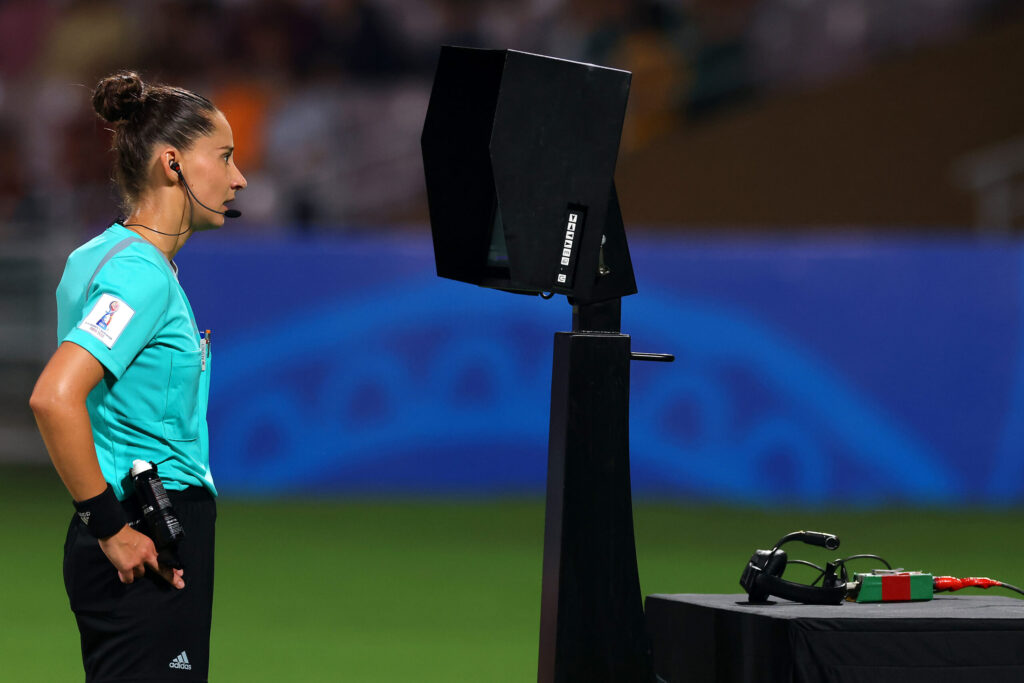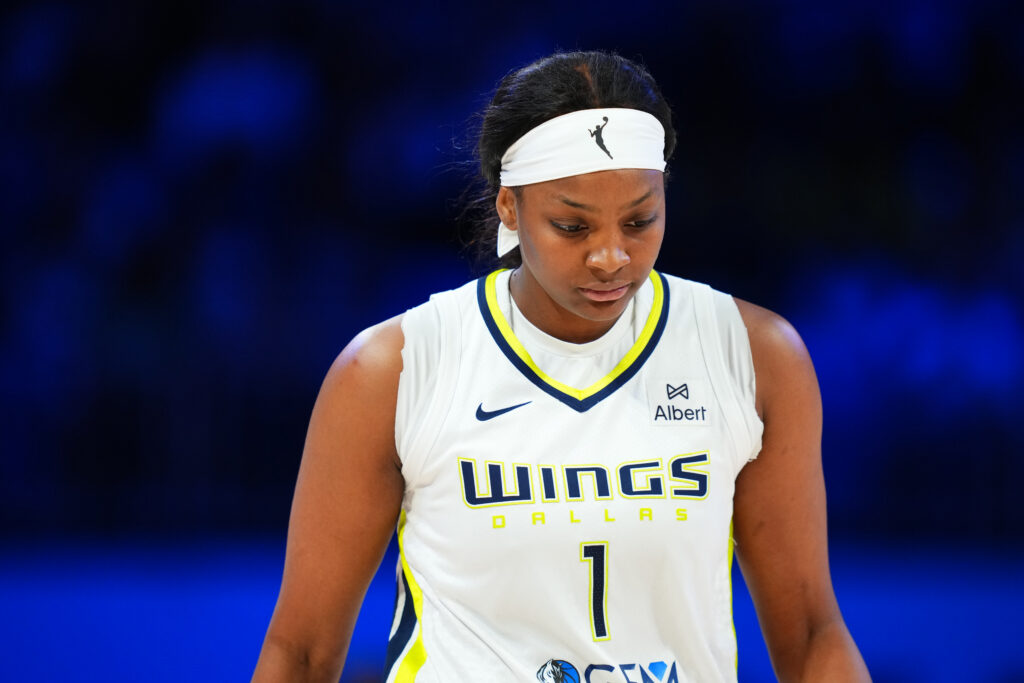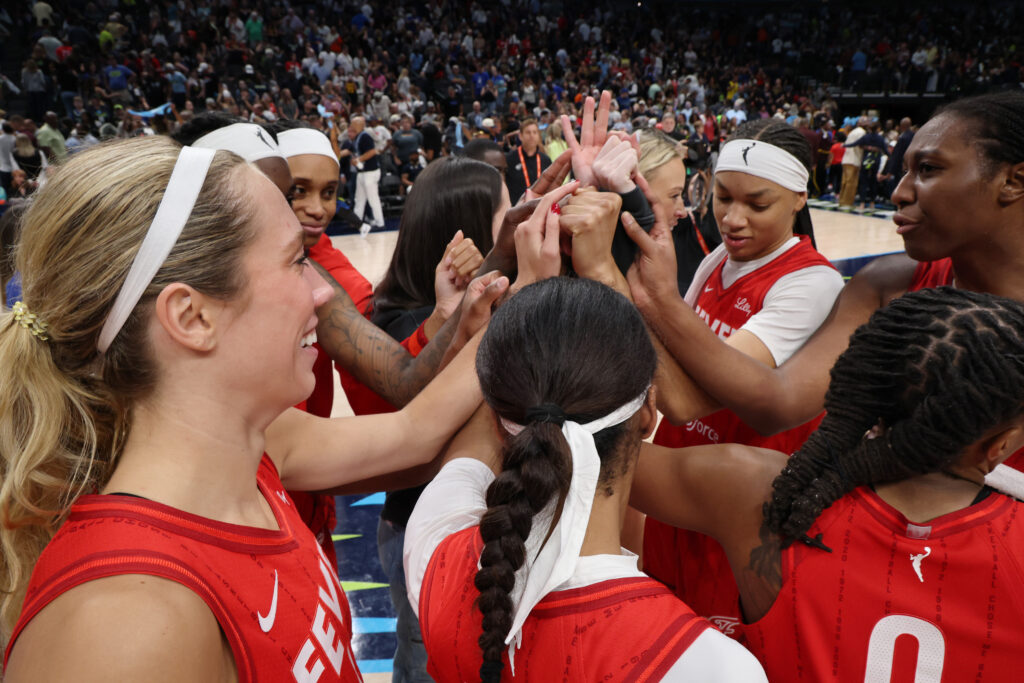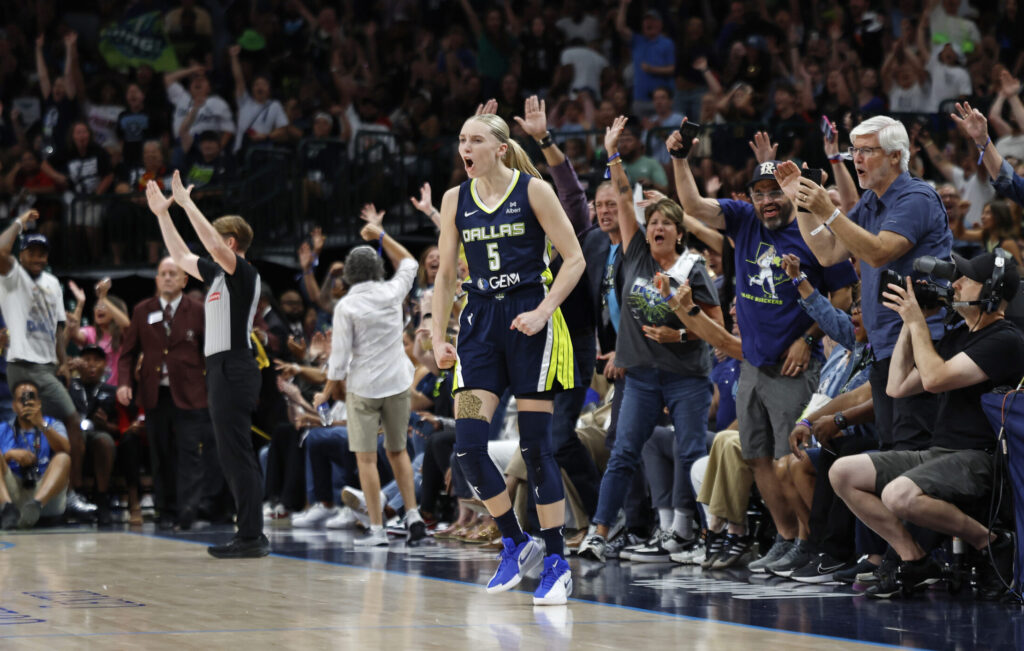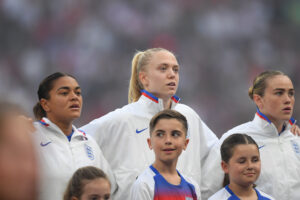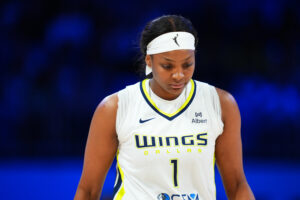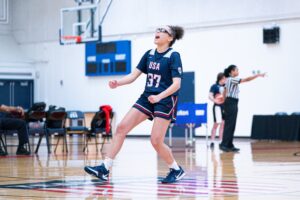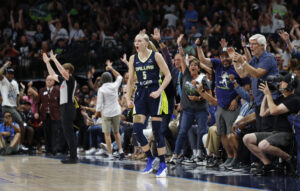This weekend, the NWSL begins the very first season of its VAR era. The league made one of the biggest investments in its 11-year history to bring the quality of officiating up to speed with the action on the pitch.
VAR has not come without its controversies in the world of global football, but when used with a light touch, it can greatly reduce the debates around missed calls and focus attention back on the pitch in a positive way.
What is VAR?
VAR stands for Video Assistant Referee, technology that assists the center official by using video replay. VAR has been used in a limited capacity in the men’s game since 2016, with MLS becoming the first domestic league to use it for a full season in 2017. Since then, it’s become a tool worldwide, with its most high-profile usage in the women’s game prior to 2023 coming at the 2019 World Cup.
With season kickoff this weekend, the NWSL becomes the first women’s domestic league to implement the technology, in an attempt to reduce clear and obvious errors in the course of a match. VAR requires training additional staff, which the league began in September, to observe monitors throughout the game. The VAR official communicates with the center official through a headset, allowing procedures like goal and foul checks to happen in real time. There is also a VAR monitor at midfield that the center official can access themselves upon consulting with the VAR crew.
VAR reviews will be shown both in NWSL stadiums in real time and on the broadcast.
What will VAR review in the NWSL?
The short answer is: not everything. The goal of VAR is to make sure the officials get the big moments of the game right, not to re-litigate every foul or out-of-bounds play. The incidents VAR will review in the NWSL are goals/no goals, penalties/non-penalties, direct red card given/missed and mistaken identity.
Under the umbrella of goals/no goals lies offside calls, which will be made based on what the VAR crew sees through at least five different camera angles, as NWSL commissioner Jessica Berman explained. VAR sometimes means that assistant referees will delay raising the offside flag if a goal-scoring opportunity is imminent and the call is close. Officials operate with the understanding that calling a play dead could have more detrimental effects on a match than letting the play finish before allowing VAR to determine if a goal was in fact offside. Other actions that could disallow a goal are a foul or handball in the build-up to the scoring opportunity.
Determining penalties/non-penalties will include handballs in the box and fouls. VAR can be used to determine whether the severity of contact inside the penalty area is worthy of a blown whistle, as well as where exactly those infractions occurred. In order to overturn a call on the field, what is seen on the VAR monitor has to clearly and obviously run counter to what the center official saw in real time; angles too close to call defer to the original call.
VAR only gets involved in player cards when a direct red card might be warranted due to dangerous play. Yellow cards are not reviewable, which means that a second yellow card leading to an accumulated red card is also not reviewable — only if the infraction itself is worthy of a straight red. VAR can, however, determine that an action originally given a yellow card is worthy of a direct red card.
In the case of mistaken identity, VAR can be used to make sure discipline like a yellow card was issued to the correct player, but not whether the offense was worthy of a yellow card.
The gray area
VAR implementations in other leagues and tournaments have gotten very literal, and in 2019 the women’s game saw how matches can get out of hand when center officials are pushed out of their element by backseat-driving from the replay monitor. For NWSL, successful VAR hinges on “clear and obvious error.” If, for whatever reason, the video quality or angle is inconclusive, the center official will not be overruled, and in some cases a VAR review will not even be recommended. In many ways, that allows the game to play out in the way it was intended, with limited breaks.
This does mean that NWSL will not have the benefit of goal-line technology, something MLS does not use either, and will have to rely on cameras for close calls on the goal line.
Ultimately, the platonic ideal of VAR is a tool that makes sure the big decisions are correct, while still empowering live officials to make the calls they need and let the game of soccer flow the way it’s intended. There will still be close calls and differing interpretations of the rules, but a less intrusive VAR approach has been well-received in MLS, and the NWSL hopes its usage follows suit.
Claire Watkins is a Staff Writer at Just Women’s Sports. Follow her on Twitter @ScoutRipley.
